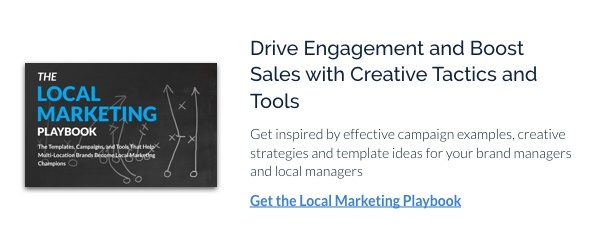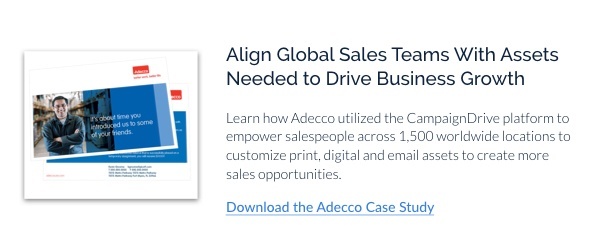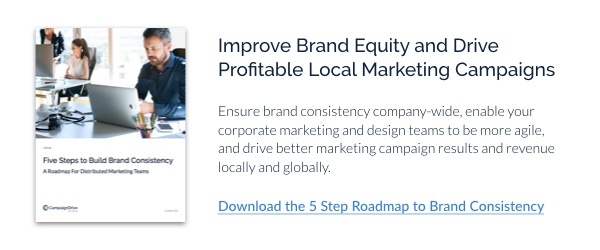Thanks to Sotheby's International Realty, Scott Carvill has made over 55 million dollars [1]. However, when Carvill was first approached by Sotheby's about joining their affiliate network, he had a few reservations. Until that point, Carvill had been running a successful real estate firm in Oahu, Hawaii. What did he stand to gain by joining forces with Sotheby's?
By partnering with the leading real estate brand, Carvill could benefit from international marketing opportunities, a more sophisticated website and other marketing key elements that he could only dream of when he was completely independent. "Once I really understood the reach and the marketing tools the partnership could provide, it was easy to say yes," said Carvill during a recent interview with CNBC.
Due to their immense brand equity and top-notch marketing support, distributed brands like Sotheby's attract and retain affiliates just like Carvill all the time. Growth for affiliate networks like these is largely down to the success of their local affiliates.
These brands rely on Carvill and others to generate business through their local connections and customer bases, and to raise the profile of the brand by running consistent and compliant campaigns. Why? For better or worse, marketing consistency at the local level has a major impact on the brand's ability to provide exceptional brand experiences for its customers.
However, only 23 percent of leaders of distributed marketing teams believe they are as effective at delivering the type of resonating local marketing as the kind that has made Carvill and Sotheby's so successful.
In order to achieve more consistent and compliant local marketing, the world's top distributed companies turn to brand asset management tools which help them implement the kind of processes they need.
By using types of software that are specifically designed for brand marketing at scale, corporate teams can get their affiliates to be even more effective at marketing, which in turn attracts more customers and bolsters the network's growth.
How Brand Asset Management Systems Will Help Your Brand Grow
Signs You Should Invest in Brand Asset Management
Software that's designed to help with brand asset management lets corporate marketing teams to manage brand assets more effectively. That could mean having a better process for creating new brand assets when you collaborate with your agencies. Or it could mean controlling how those assets are deployed across the affiliate or franchise network.
The difference between examples like those shouldn't be underestimated. The kind of software that will help you control your corporate workflow is usually not the same as the kind which will fit seamlessly into your local marketers' day-to-day operation.
So if you're thinking about getting a system for brand asset management, you need to know what problems you're looking for it to solve right now. If your brand is currently experiencing any of the following roadblocks, now might be the time to invest.
- Your corporate marketing team is frustrated. Is your corporate marketing team disappointed with the quality of the brand's creative when it shows up in local markets? With a brand asset management solution, corporate teams can help graphic designers focus on the brand's high-level marketing objectives. With seamless access to the tools to launch campaigns, messaging and more into the field, corporate marketing teams can deploy the brand more effectively with engaging marketing pieces and fresh designs.
- Your designers are inundated with complex one-off requests. Are your designers spending significant time on ad hoc requests submitted by your local affiliates? As a result, they're probably not feeling as productive as they could. Brand asset management tools that are geared towards local marketing help to streamline the process to equip local partners with the marketing materials that they need. No more one-offs!
- Your local affiliates are complaining. If your local affiliates don't see the value in the branded marketing materials that they've been given, they might go rouge and create their own. Brand asset management systems can simplify the steps local marketers have to take to find a good asset. Even better, they can empower local partners to create uniquely customized and compliant marketing materials.
The Common Fears Holding Brands Back From Brand Asset Management
Implementing a new software solution can be overwhelming, not to mention when you need to put one in place across both corporate and local teams. To address some of these fears, brands need to ask the right questions about the state of their brand assets today. What are some of the roadblocks you run into as it relates to local marketing? How can your processes be improved? These and other questions can give you the context you need to face the common fears that your teams may have about new software.
To maximize adoption of a brand asset management system and power through the on-boarding process with relative ease, brand managers have to be ready to answer the following concerns:
- Software is too expensive. At the corporate level, procurement and IT may have a few questions about the cost of a new marketing system. To address these concerns, brand managers must have a clear understanding of how much money is being lost today, in terms of time and resources, without a solution in place. It's a classic case of opportunity costs. Start by identifying areas of potential value — improved efficiency or marketing effectiveness —to help teams understand how this new system will impact the bottom line. When the budgeting teams see the bigger picture, it puts the upfront costs into perspective.
- Additional marketing efforts. To make sense of how this investment will impact your marketing team, break down what you’re already doing to put up quick fixes. Evaluate the effort that's being spent in the corporate office, as well as additional efforts that your local affiliates and local brand partners have to make to bridge their own knowledge gaps, print out extra materials, or hire freelancers to step in and help out. It’s possible they’re spending a lot of time on fixing issues that could easily be resolved with a new system.
- Local marketer buy-in and adoption. Aside from saving money and effort, however, there are all types of psychological barriers that may prevent local affiliates from using the software. Many executive teams know the risk of implementing a new system only to see it go unused. Before presenting local marketers with a new piece of software, outline the reasons why they might not see the software's value and pick it up right away. Once you have that an idea of what those issues could be, come up with a plan to address each of those concerns and hesitations. You'll thank yourself three months into the project when all your affiliates are up and live with the system.
- Can’t support volume of content. Adopting a new piece of brand asset management software and the supporting process it requires may be intimidating, especially if there’s a large volume of marketing and branding content being created right now. So first, figure out how many new assets you’re currently producing every month, quarter and year. With that knowledge, brands can be more confident in their ability to get the new content into the system in the future, or transition existing materials over right away.
Remember, when transitioning to a new system, your team is going to have to invest a significant amount of time to get things rolling successfully. Always start by auditing your current processes to see which team members or partners will be most affected by the change. It's important to be understanding of the questions, concerns and hesitations mentioned above. Otherwise, your brand asset management dreams can quickly evaporate.
How Brand Asset Management Systems Help Brands Grow
In order achieve and sustain accelerated growth for their location networks, companies rely on brand asset management systems to do the following:
1) Improve Quality of Local Marketing. Brand asset management tools help corporate graphic designers manage and maintain brand standards and campaigns. As a result, design teams are able to produce more effective and engaging marketing materials for their local affiliates to use. With these higher-quality marketing materials at their fingertips, local partners can attract and retain customers at a faster pace. The brand loyalty that comes from better marketing results in more business and steadily growing sales for these local stores. In fact, the power of "great design" is one of the reasons why fast-growing concepts like Pret-a-Manger and Buffalo Wild Wings have been so successful.
2) Increase Frequency of Local Marketing. When branded locations do more marketing, they're reaching their customers more frequently. With this ongoing marketing activity, local affiliates get in front of their customers more often and give them even more reasons to buy from them. For example, Tonya Brigham opened her own Smoothie King franchise and leveraged the brand’s stellar reputation to exceed expectations as a franchisee. Brigham deployed a unique, localized approach to attract and retain customers by being a great partner of good causes in her store's neighborhood. Having the marketing programs to help her keep this Word-of-Mouth message going strong boosts her customer loyalty and awareness, and is part of why customers truly believe the brand's tagline of "Smoothies with a Purpose."
3) Boost Local Marketing Personalization. With brand asset management solutions, local affiliates can create more personalized local marketing material. More than just another generic advertisement, local affiliates have the ability to create deeply authentic marketing materials based on their knowledge of the specific locale, their customers and what's happening near them.
For example, Panera Bread offers personalized marketing experiences through their weekly rewards program, complimentary birthday treats and local fundraising events. By creating a great relationship with the consumer, customers are more likely to choose Panera Bread as their preferred dining experience.
4) Improve Local Marketing Autonomy. Many affiliates pride themselves on their ability to work independently, so providing self-service marketing assets can help to grow and maintain the network of local affiliates. Local partners like having more control over their own messages, rather than being micromanaged by the brand. For example, Chelsea Segura says that one of her favorite things about working with The Little Gym is her ability to "put her own spin on things."
While owners like Chelsea appreciate the independence and autonomy, they also take solace in knowing that the brand will provide all the tools and resource they need to be successful. Brand asset management systems only accelerate this independence and the good things that come from it.
Maximize Local Marketing and Grow Your Location Network With a Brand Asset Management Solution
With the right tools in place, brands can overcome the toughest distributed marketing challenges. As a result, the world's leading distributed brands have invested in brand asset management solutions to streamline corporate and local processes, maximize marketing power and attract and retain customers.
With a brand asset management tool that focuses exclusively on local marketing like CampaignDrive, local affiliates can make the right messaging and design choices. By selecting a tool that supports end-to-end local marketing support, franchisees are able to put their best foot forward when it comes to marketing. The result? When customers are presented with great local marketing, they're more likely to re-engage with the brand for future purchases. When local affiliates drive more sales, corporate teams can make additional investments to help grow their brand.
Achieve accelerated marketing results with the Local Marketing Playbook. Use this guide to unlock valuable marketing tactics, tools, and templates. 
Sources:
- https://www.cnbc.com/2016/05/11/sothebys-international-realty.html






